История компании Fender с момента основания до 60х годов

Датой основания компании принято считать 1946 год, однако началось все немного раньше, когда в 1940 году, инженер и изобретатель Лео Фендер загорелся мыслью о улучшении гитар с полым корпусом, путем замены деки на цельный кусок древесины, идея хоть сама по себе и не была уникальной, но на тот момент серийных инструментов с такой конструкцией не было, а Лео в свою очередь хотел наладить именно серийное производство с максимально упрощенным процессом сборки, что в свою очередь было действительно революционной инновацией.
 Лео Фендер
Лео Фендер
Появление Fender Telecaster
На воплощение этой идеи в жизнь у Лео ушло ровно 10 лет, в 1950 году выходит Fender Esquire, которая по сути являлась первой серийной цельнокорпусной электрогитарой, оборудована она была всего одним звукоснимателем, однако уже в 1951 разрабатывается Fender Broadcaster с двумя звукоснимателями, которая в последствии переименовывается в Telecaster и в дальнейшем становится одной из самых популярных и узнаваемых гитар в мире.
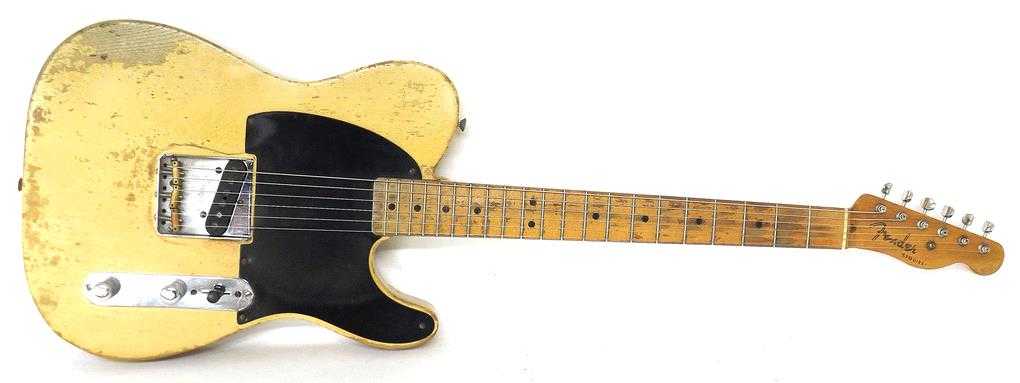 Fender Telecaster
Fender Telecaster
Серийный выпуск бас-гитар
В том же году, Лео Фендер в первые в мире начинает серийный выпуск электрических бас-гитар Precision Bass, не смотря на то, что идея совмещения гитары и контрабаса была не нова, первыми это сделали Audiovox Manufacturing за 15 лет до Fender, однако это были ограниченные серии, а не массовое производство. Precision Bass в дальнейшем неоднократно модифицировалась и переиздавался, обзаводясь при этом тысячами поклонников и приобретя культовый статус.
 Precision Bass
Precision Bass
Легендарный Stratocaster
В 1954 году выпускается легендарный Stratocaster — этот инструмент произвел фурор в мире музыки и на многие годы вперед определил дизайн электрогитар. Технические характеристики Stratocaster на тот момент были революционны — это тремоло система собственной конструкции «Synchronized Tremolo» (о которой мы писали в статье:Виды тремоло бриджей для электрогитары: от винтажа до современности ) эргономические вырезы на корпусе гитары «Comfort Contour Body», на передней части под левую руку, а на задней для лучшего контакта инструмента с телом, но главное — это три сингловых звукоснимателя с AlNiCo-магнитами (сплав алюминия, никеля и кобальта).
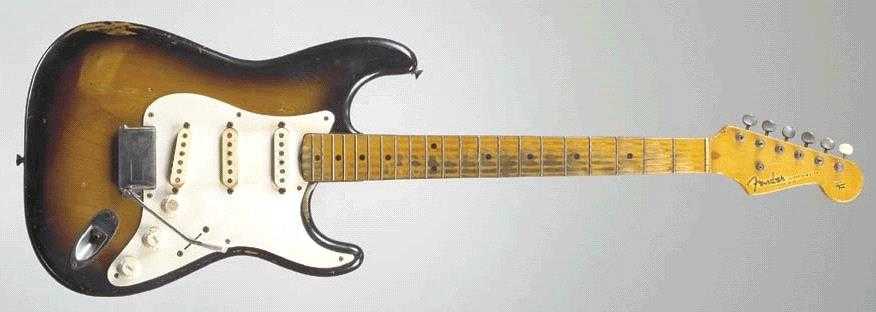 Fender Stratocaster
Fender Stratocaster
Вслед за Stratocaster последовала целая вереница классических на данный момент инструментов, таких как Jazz Bass, Jaguar и Jazzmaster, а также усилителей, в последствие ставших легендами (о которых мы писали в статье: 12 легендарных гитарных усилителей ).
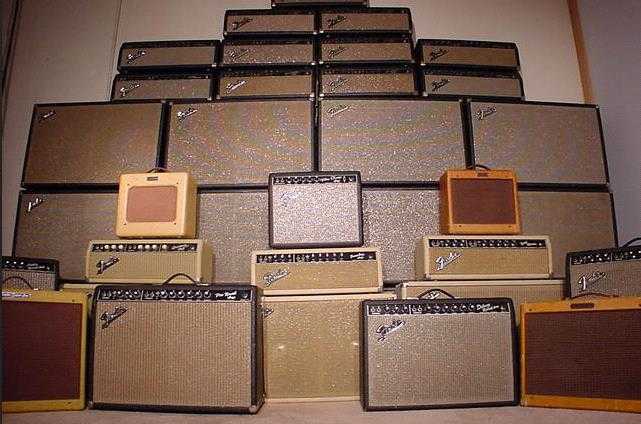
Final Thoughts On the Fender Modern Player Telecaster Series
Here are some key points and highlights for the Fender Modern Player Telecaster
- Classic Telecaster looks
- Tonal versatility
- Two finish options that beautifully display the grain
- Sturdy polyester finish built for gigging
- Belly-contour for added comfort
- Easy to play neck
- Low action with jumbo and medium jumbo frets
- Added sustain with hard-tail bridge
- Comes at an affordable price
- Ideal guitar for special modifications
- Ideal upgrade from a beginner guitar
- Great for both casual and seasoned players
To sum it up this guitar is great for players who love a good old classic design with more tone options and a modern playability. At this affordable price tag, there’s no excuse not to bring one home.
Feel & Sounds
A combination of relatively small details such as the increased nut width and flatter fingerboard radius push the Player Plus into a ‘modern’ bolt-on category on paper, but neither guitar here feels remotely like a shred machine.
The combination of well-rolled fingerboard edges (apparently a first for Fender’s Mexican-made guitars), a satin neck back and face, and wide ’n’ low fretwire (Fender-standard medium jumbo frets, measured at 2.6mm wide and just over 1mm high) simply make them great players. Both of our samples are very well set up with a low string height and near perfect nut work.
Our only criticism is that the setup really might be too low and slinky, enhanced by the standard 0.009-gauge strings and virtually no relief. But the dual-action truss rod with its headstock adjustment is easy to tweak, as are those block saddles.
(Image credit: Future / Olly Curtis)
The nut width spec is increased, but only fractionally, from 42mm (1.650 inches) to 42.8mm (1.685 inches) in line with the Performer and USA American Pro II and Ultra, and the flatter radius is probably more noticeable to those used to the smaller vintage-style radius – less so if you own and use a variety of guitars, not least Gibsons.
Both our guitars actually measure the same 42.89mm at the nut and both have a pretty standard string spacing of 35mm. Both necks are on the slim side, depth-wise, too, classed as having a Modern ‘C’ Player Plus profile: 20.8mm at the 1st fret on our Strat and 22mm by the 12th.
The Tele is very slightly thicker, which may be that finish over the maple fingerboard, at 21mm and 22.2mm – very mainstream indeed and with a profile that certainly in lower positions has a hint of a ‘V’.
(Image credit: Future / Olly Curtis)
The first thing we notice when we plug in is the lack of hum pick-up. Now, we could start a long debate about single coils versus humbuckers and how the former are ‘correct’ and the latter never sound ‘right’. But we’re simply going to report what we hear.
As ever, new strings on a new guitar will sound a little brighter so it’s no surprise that we have bags of crisp clarity on our Strat with excellent bouncy, funky mixes and a pretty standard output – certainly not ‘hot’.
The extra bridge and neck, and all-three pickups together selections, add to the palette, and having a specific tone control for the bridge makes perfect sense here.
However, while those tone controls obviously pull back the highs, progressively darkening and softening what we hear, the master volume also plays a part in shaping your sound. For example, knock the control back from 10 to 9 and you really hear the high-end dip, almost like a no-load pot.
For pristine cleans, then, you’ll probably want that volume to be fully up, but using varying gains pulling back the volume a notch really helps ‘thicken’ what we hear. To be honest, aside from going up a string gauge and giving the setup a little more air, we’d take this on a gig no problem. A very enjoyable guitar.
It’s a little different with the Tele. Again, we have that abrupt treble roll-off on the volume control, and we’re surprised to find that the series link of both single coils happens in all three positions on the selector switch when you pull up the tone control’s switch.
(Image credit: Future / Olly Curtis)
Typically, you’d wire that to be a series/parallel option with both pickups on as with the American Pro II Tele. That said, whatever pickup you’re on with the switch down you can immediately access the bigger series voice.
There’s little doubt that it gives this Tele a beefier tonality that laps up roots (and more) gain. But does it still sound like a Tele? Of course, if you’re veering on the more polite side until you pull that volume back and kick in a boost then there’s a low-output humbucker vibe here, for sure.
And the more we play and compare with other T-styles it comes across as less the sort of Tele you’d plug straight into a tweed amp and just go for it, and more one designed for a pretty basic pedalboard. Perhaps another indication of the intended player and a marked difference to the vintage-y Vinteras.
Verdict
Let’s face it, ‘modern’ and Fender isn’t always an easy mix. You might expect firms like Ibanez, Charvel or Suhr to modernise the classic platforms, but Fender? Except Fender has successfully done that with the American Pro II range and – more relevant here – the Ultra series. And the design brief of these Player Plus guitars is surely, how do we make an Ultra at under half the price in Mexico, isn’t it?
These are undoubtedly guitars that reflect how many people are playing today. Not everyone is chasing those vintage tones, man, let alone playing dirty blues in gin-soaked bars. And, frankly, you should be shot if you can’t make either of these sound like a Fender.
But the modernism isn’t that obvious – not least with colours of our review samples. Not for vintage cork-sniffers, then, but these guitars have mass appeal and we predict they’ll sell in container loads: thought-through upgrades and worthy additions to an already huge-selling, improved platform.
Fender Modern Player Telecaster Thinline Deluxe
With its thinline design and a pair of P90s, this model breaks the Tele mold for looks and sound, but still retains the classic Fender features and style.
Appearance
This guitar is a hybrid of the three known Telecaster variations. It has the Tele body shape with the f-hole and aesthetic of the thinline series and a pickup configuration that is obviously from the telecaster deluxe. Even with all of these elements combined, the guitars’ looks are far away from being a Frankenstein.
Available in three-tone sunburst with a parchment pickguard or in transparent black with a black pickguard, this guitar screams both mojo and sophistication.
Body and Neck Materials
The body is made of mahogany which gives of a dark and fat tone with a very pronounced mid-range. The f-hole adds a top-end roll-off which creates a roundness to the sound. Even with a chambered body, the guitar has a distinctive and impressive sustain.
The neck is similar to the Fender Modern Player Telecaster Plus. A punchy and bright tinted maple with the bi-flex truss rod system (read all about truss rods).
Fender Modern Player Telecaster Thinline Deluxe Demo
Harware and Electronics
The hardware for this model is basically the same as the Fender Modern Player Telecaster Plus. It features the same vintage-style tuners, a pair of round string trees, a 1.650” synthetic bone nut, and the same string-through-body strat-style bridge with stamped saddles.
The neck on this model has 22 medium-jumbo nickel frets so it offers the feel of both modern and vintage playability. Going to the electronics, this model has a pair of MP-90 pickups that pack a lot of thick mid-punch with notable hints of high-end sparkle. The MP-90s are routed to a 3-way selector switch and four knobs, 1 volume, and 1 tone knob assigned to each pickup.
Sound and Feel
At this price, this guitar has a more varied sound palette than you could ever possibly need.

The contrast of the dark chambered mahogany and the bright highs of maple make up a unique tonal balance for this instrument. Even with 2 pickups and a 3-way pickup selector, the four knobs pave way for a variety of tones for this instrument. Ranging from smooth, warm jazz tones to twangy Tele tones that we’re familiar with, this guitar covers a lot of the sonic spectrum. Also, the semi-hollow mahogany body and the MP90s make this guitar able to get away with a considerable amount of gain.
The advantage of having one volume and one tone knob for each pickup is that you can assign a pickup for your rhythm tones and one pickup for a lead tone so with a flick of a selector switch, you probably won’t need an overdrive or boost pedal anymore.
The chambered body greatly contributes to the weight of this guitar, making it way lighter than most telecasters. The guitar still stays true to the familiar Fender feel with its glossed 25.5” scale C-shaped neck, 9.5” radius, and medium-jumbo nickel frets.
Specs
Fender Player Plus Stratocaster
(Image credit: Future / Olly Curtis)
- PRICE: £939 (inc gigbag)
- ORIGIN: Mexico
- TYPE: Double-cutaway solidbody electric
- BODY: Alder
- NECK: Maple, Modern ‘C’ profile, bolt-on
- SCALE LENGTH: 648mm (25.5”)
- NUT/WIDTH: Synthetic bone/42.89mm
- FINGERBOARD: Pau ferro, pearloid dot markers, 305mm (12”) radius
- FRETS: 22, medium jumbo
- HARDWARE: Nickel/chrome-plated 2-point vibrato (with steel baseplate and die-cast block) and steel block saddles, ‘F’ logo rear lock tuners
- STRING SPACING, BRIDGE: 52.5mm
- ELECTRICS: 3x Fender Noiseless single-coil sized humbuckers, 5-position lever pickup selector switch, master volume, tone 1 (neck and middle), tone 2 (bridge) w/ pull-push which adds the neck pickup to position 1 bridge and 2 bridge and middle
- WEIGHT (kg/lb): 3.8/8.36
- OPTIONS: None
- RANGE OPTIONS: The Player Plus Stratocaster HSS (£979) adds a Wide Range-style covered full-size humbucker at bridge. The Player Stratocaster currently costs £679
- LEFT-HANDERS: Not currently
- FINISHES: Opal Spark (as reviewed), 3-Colour Sunburst, Olympic Pearl, Aged Candy Apple Red and Tequila Sunrise
Уильям Шульц, Нельсон Манделло — развитие Fender после 1965 года
В начале 60-х здоровье Лео Фендера ухудшилось, в связи с чем в 1965 он продал компанию CBS. В течении последующих 20 лет рост и производства и продаж увеличивался, однако в погоне за прибылью, общее качество инструментов заметно упало, в связи с чем в 1981 году, новый президент компании Уильям Шульц, при поддержке юриста Нельсона Манделло, разработали 5-ти летний бизнес-план, основанный на увеличении качества продукции и большей приверженностью к исследованиям и развитию.
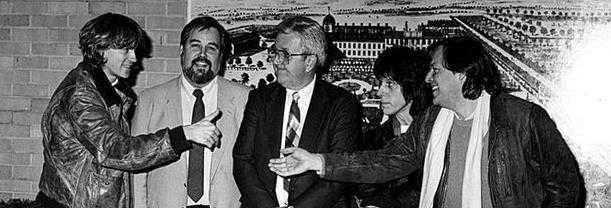
В 1985 году Шульц покупает компанию Fender у стремящихся избавится от ненужного бизнеса CBS, тем самым передав бренд небольшой компании энтузиастов стремящихся, вернуть былые заслуги и создать лучшие в мире усилители и гитары.
Новую компанию пришлось создавать практически с нуля, в связи с чем производство перешло в город Корона, штат Калифорния (1985), а так же на вторую фабрику в Энсенада, Мексика (1987). Также в 1987 году, был открыт Fender Custom Shop в Короне, который занимался в первую очередь заказными инструментами высочайшего уровня.
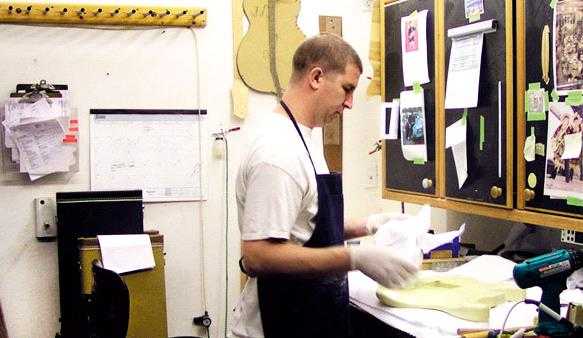
В 2005 году, место Шульца за столом генерального директора сменил Манделла, который успешно продолжает линию начатую в 80-х, при этом равнозначно сочетая как деловую хватку так и любовь к музыке.
How the Fender Modern Player Telecaster Compares to the Standard Model Telecaster
Sound Differences
The most obvious difference between the Fender Modern Player Tele and the Standard Tele is the addition of the humbucker on the bridge. It provides a glassier, heartier sound as compared to the Standard Tele’s single coil sound. This is especially true when paired with a high quality amp. However, the Modern Player’s tuning may not be as stable as the Standard Tele’s. This means it may need to be adjusted more often.
In addition, the bridge humbucker includes a split channel function. You can activate it via a toggle switch located between the tone and volume knobs. When activated, the split channel function gives the humbucker a brighter, narrower coil sound that differs from the standard coil output. The double coil produces a more hardier output.
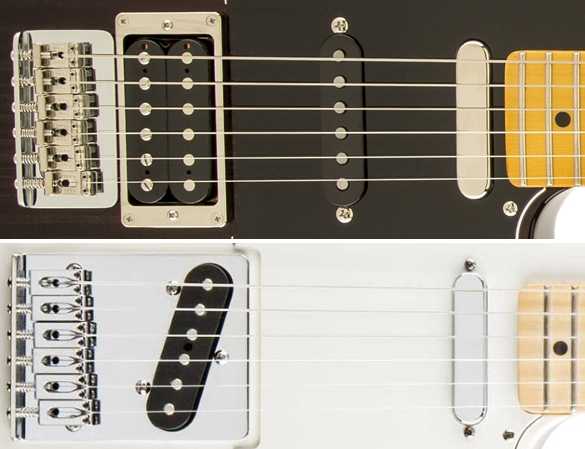
Fender Modern Player (up) vs. Standard bridge differences
Differences in Hardware
The three different HSS pickups on the Modern Player Tele also give it a greater span for genres than the Standard Tele. Furthermore, the inclusion of the Strat single coil in the center, allows for a uniquely sharp but smooth sound.
The addition of five position switching for the three pickups, as opposed the Standard Tele’s three position switching, also allows for a greater range of tones.
Differences in Playability
Another variation between the Modern Player Telecaster and the Standard Telecaster is the addition of jumbo frets as opposed to the Standard Tele’s medium jumbo frets, which is especially beneficial for soloists. Bulkier fret wires help ensure your finger is elevated high enough above the fretboard to avoid rubbing during your solo.
Differences in Durability
Lastly, the Modern Player Tele has a pine body as opposed to the softer alder body of the Standard Tele. It is more prone to dents, so it makes for a sturdier, more durable, long-lasting instrument.
Price Differences
The Modern Player and the Standard Tele also differ in price, with the cheapest being the Modern Player. The Modern Player Tele typically retails for about $300 to $500 at most major retailers, including Amazon, as compared to the Standard Tele, which typically retails for around $500 to $700 at most major retailers, which means the Modern Player Tele offers a much cheaper price than the Standard Tele and with more features.
Verdict
Editor’s Pick

Fender Player Telecaster Electric Guitar
4.5
CHECK PRICE ON SWEETWATER
CHECK PRICE ON GUITAR CENTER
We may earn commission from purchases made from our links, at no additional cost to you.
This is a mid-range guitar. And, if there is something good out there that professionals and concert kings need, it’s the high-end flagship Teles and not this low-end guitar.
Yes, the pickups might be great, but they cannot represent the guitar, at all.
Depending on your needs, this is a good guitar indeed. And when I’m saying it’s good, well, we can safely say that there are other better guitars than this.
FAQs
Do you have some questions about the Fender Player Telecaster HH? If so, we’re here to bring you all of the answers that you need. That way, you can truly decide for yourself if this is the best instrument for you!
Question: What does HH mean on Fender guitars?
Answer: It’s important for you to not what the HH stands for in the name of this guitar if you don’t have any prior musical experience. The HH in the name refers to the type of pickup configuration that this guitar has.
In other words, this means that it tells you what kind of pickups are being used in the guitar and in what type of order they’re being used. As a way to break this down further, the first letter for each pickup talks about what type of pickups are being used. Since there are two H’s, it means that there are two humbucker pickups.But, let’s say that there the name of this was HSS. This would then mean that there is one humbucker pickup, as well as two single-coil pickups.
Question: Are Mexican Fender Telecasters decent?
Answer: One of the most common problems that buyers run into when looking at the Fender brand is deciding to buy between American Fenders and Mexican Fenders. If you want to buy American made, do it. But, there isn’t any shame in buying Mexican Fenders.
Mexican Fenders aren’t as good of quality. But, that doesn’t mean that they’re low-quality guitars. For the affordable price that they’re at, they’re still decent guitars!
Question: Is the Fender Player Telecaster HH good for beginners?
Answer: Yes, this would be an amazing guitar for a beginning musician! This is because this Telecaster has a small radius and it’s lightweight. Basically, that means that this guitar would be perfect for a beginner to play. Plus, it produces a fantastic sound, which will be even more encouraging for a beginning musician!
Question: What type of music is the Fender Player Telecaster HH good to play for?
Answer: The Fender Player Telecaster HH is an incredibly versatile guitar. You’ll be able to play it with most styles of music. Some of the most popular genres that work well with this guitar include:
• Pop• Country• Reggae• Rock• Alternative• R&B• Indie rock• Blues• Jazz• Punk• Folk
Sound
One of the most important parts of the Fender Player Telecaster HH is the sound quality that it produces. What I personally really like about this instrument is how versatile the sound that it produces is.
You’ll find that there are two humbuckers on the Fender Player Telecaster HH. This means that when you’re playing, you’ll get a rich, warm, and broad sound from this. I was able to play around with the blues, rock, and metal with this guitar. All of these genres sounded great paired with the sound that this instrument produces.
And while many people complain about the quality of Fender humbuckers, these definitely aren’t the worst ones that have ever been produced. Yes, you’ll likely find humbuckers that produce a much better sound. But, the humbuckers on the Fender Player Telecaster HH are Player Series Alnico Humbuckers and they’re definitely not bad.
Also, when you consider the price that you’ll be purchasing this Fender Player Telecaster HH at, you’re practically getting a steal. This is especially considering the quality of the tone that this guitar produces.
Концепция звука от Fender
Фендеровский звук
Закончив краткий рассказ об истории компании, хочется поговорить о насущном, многие из нас слышали такие выражения, как: «типичный фендеровский звук», «фендеройд», «фендеровское стекло» и т.п. и если для опытных и умудренных жизнью музыкантов эти выражения, применительно к музыкальной аппаратуре, вполне понятны, то для начинающих все немного сложнее, в связи с чем эта часть в большей степени для них.

Так что такое этот пресловутый типичный фендеровский звук? В первую очередь — это чистый звук, кристально чистый, иногда упругий, иногда прозрачный, но всегда чистый как кристалл и это касается как гитар, так и усилителей, причем и бюджетных тоже (о которых мы говорили в статье Бюджетное гитарное усиление).
Особенности конструкции гитар фирмы Fender
Также существуют и негласные правила, относительно конструкционных особенностей инструментов, это легкие породы дерева для деки (ольха, липа, тополь и ясень хотя по факту он, не такой уж и легкий, но в ходит в состав классической древесины для гитар Fender, подробнее о гитарном дереве можно прочитать в статье Древесина для электрогитар: от тополя до чёрного дерева).
Конструкция грифа на болтах, сам гриф из клена ( в идеале с кленовой накладкой, хотя тут нет канона и встречаются как палисандр, так и черное), звукосниматели синглы, но самое главное — это взаимная заменяемость компонентов, так к примеру зачастую можно встретить экземпляры с грифами и деками не просто из разных серий, а с разных сторон океана.
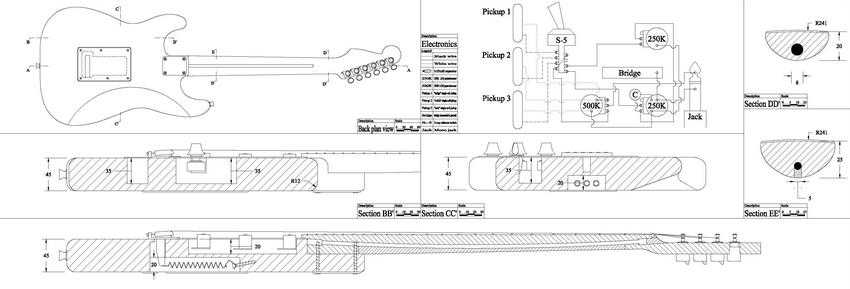
Однако вернемся к звуку, что бы понять как в классическом понимании должен звучать Fender лучше всего послушать Stevie Ray Vaughan, Mark Knopfler и конечно же Jimi Hendrix — это даст избыточное представление о общей концепции, однако бывают и исключения, ведь моделей инструментов за все время компания представила с избытком.
Hardware
The bridge of the guitar is made in the vintage style. 6 saddles with a string through the body design, the bridge has a very decent raise for great action. The string through body design allows the guitar to be very easy to restring. Overall a great choice for a vintage guitar.
The nut of the guitar is made with synthetic bone. This material is a good choice for affordable guitars, as it has a nice balance of being cheap and providing a great defense against string buzz, as well as a good harmony.
The tuning machine on the guitar is designed in the vintage style. The guitar has very decent tuning stability, which is always appreciated, especially for guitars that are so much fun to play. The tuning will hold for a while after you first tune it.
Body Quality
The body of the guitar is designed in the traditional Telecaster shape. Telecaster has always been a popular body design, first introduced a very, very long time ago. It is a shape well known for its beauty, comfortable play and easy access to the high tone frets. The Fender Modern Player Tele Plus does a great job of building on this design, with the rustic looking brown design being one of my absolute favorites in the roster.
The true vintage on the other hand is brought into the modern world by the materials used to construct this guitar. The very first telecasters were made of Pine and this Modern Player Tele Plus re introduces the tonewood to us. You don’t see pine too much nowadays, as it has fallen out of use over the past years. The tonewood is a very interesting material. The effect it has on the sound is very reminiscent of alder. Being almost transparent in character, it allows the tones of the strings to flow through uninterrupted and unaffected. The hardwood is also known as being rather lightweight and soft, which means it is very comfortable to hold yet prone to being damaged. You could say the wood is comparable to basswood in this sense, without the tonal implications.
The neck of the guitar, with the need for sturdiness being imperative, is constructed entirely out of maple. This allows the guitar to stay together for a long time, giving it the much needed resistance against impact, scratching and wear. The neck is also bolt on, which is not my favorite way of adjusting the neck, and yet is fine in the case of this well made guitar. The fretboard of the guitar is made out of maple as well. Not a traditional pick, yet one that works surprisingly well.
About the Telecaster guitar
Fender launched the Telecaster electric guitar in 1952. Here’s a bit of the history behind electric guitars.
The Modern Player Telecaster converges the charm of its vintage Telecaster design with the essential features required to fit modern player needs. It checks some beginner’s boxes, but it’s more suited for intermediate and experienced players looking for a reliable Telecaster at a fair price.
The Tele is Fender’s oldest commercial solid-body electric guitar model. Its metallic & bright sound has been a hit in jazz, blues, country, funk, reggae, rock, and pop music. Whether it’s Pink Floyd’s founder guitar player Syd Barret or the mellow sound of John Mayer, or the new-wave rocker sound of Kaleo, we can always find someone who has inspired us with a Telecaster guitar.
Before we dive into the subject, let me know in the comments what’s your experience with Fender electric guitars?
Build
This is a solid body guitar. The body of the guitar is made with alder, while the neck is made with maple. Moving on, you’ll find that the neck has a modern C shape to it and has a Modern C shape.
Also, the Fender Player Telecaster HH has a scale length of 25.5-inches. And it comes with a dual-action truss road. Next, the fretboard is made up of maple and has a radius of 8.5-inches. Then, there’s a nut width of 1.65-inches.
As far as electronics go, this Fender Player Telecaster HH has a 2 Player Series Alnico Humbuckers. Both of these pickups are passive and come with an option for coil-split. In addition, there’s a 3-way pickup switch.
Electronics
The electronics on this guitar are nothing to write home about, but neither are they disappointing. You have an interesting setup with a Humbucker – Single Coil – Single Coil configuration. You have a Modern Player Strat, Modern Player Tele and a Modern Player Humbucker. This combination results in a great versatility of sound. The humbucker is rather powerful and has a tendency to overpower the single coils during play, so getting creative with pickups combinations is important .The single coils are rather decent, but the Tele tends to be a little on the weak side.
The controls on the guitar are not much more than you would expect. You have two knobs, one for volume and the other for tone. A threeway level switch for pickup configurations and a small lever for splitting the coils.

































